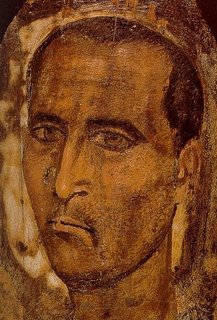From Violence and the Sacred
Girard closes Chapter One with comments on the efforts of religious thinkers to witness to evil. I don't have much in the way of questions about this, but it's a great conclusion well worth quoting.
Even the wildest aberrations of religious thought still manage to bear witness to the fact that evil and the violent measures taken to combat evil are essentially the same. At times violence appears to man in its most terrifying aspect, wantonly sowing chaos and destruction; at other times it appears in the guise of the peacemaker, graciously distributing the fruits of sacrifice.
The secret of the dual nature of violence still eludes men. Beneficial violence must be carefully distinguished from harmful violence, and the former contunually promoted at the expense of the latter. Ritual is nothing more than the regular exercise of "good" violence. As we have remarked, if sacrifcial violence is to be effective it must resemble the nonsacrificial variety as closely as possible. That is why some rites may seem to us nothing more than senseless inversions of prohibited acts. For instance, in some societies menstrual blood is regarded as a beneficial substance when employed in certain rites but retains its baleful character in other contexts.
The two-in-one nature of blood - that is, of violence - is strikingly illustrated in Euripides' Ion. The Athenian queen, Creusa, plots to do away with the hero by means of an exotic talisman: two drops of blood from the deadly Gorgon. One drop is a deadly poison, the other a miraculous healing agent. The queen's old slave asks her the origin of the substance:Creusa When the fatal blow was struck a drop spurted from the hollow vein.Nothing could seem more alike than two drops of blood, yet in this case nothing could be more different. It is only too easy to blend them together and produce a substance that would efface all distinction between the pure and impure. Then the difference between "good" and "bad" violence would be eliminated as well. As long as purity and impurity remain distinct, even the worst pollution can be washed away; but once they are allowed to mingle, purification is no longer possible.
Slave How was it used? What are its properties?
Creusa It wards off all sickness and nourishes life.
Slave And the other drop?
Creusa It kills. It is made from the Gorgon's venemous serpents.
Slave Do you carry them mixed together or separate?
Creusa Are good and evil to be mixed together? Separate, of course.


0 Comments:
Post a Comment
<< Home